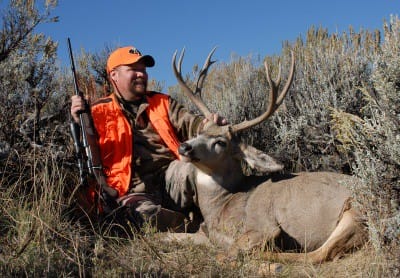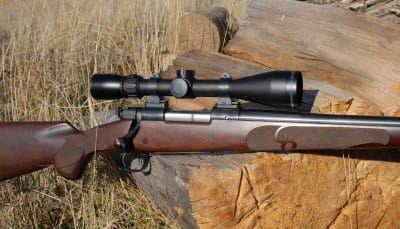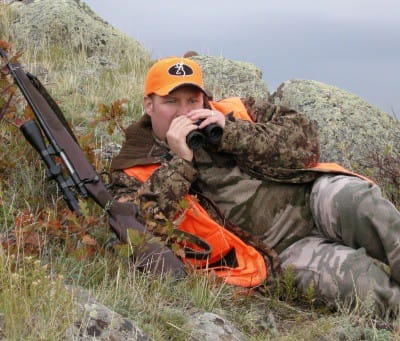
It was in March 2006 that U.S. Repeating Arms turned off the lights, ushered every employee home and closed the doors indefinitely at its New Haven, Connecticut, plant. Jobs were lost, and an American icon, the Winchester Model 70 bolt-action rifle (and the Winchester Model 94 lever gun), would be produced no more. USRAC’s Herstal, Belgium-located parent company, Fabrique Nationale (commonly known in the U.S. as FNH), cited poor quality control, environmental difficulties, labor issues, outdated equipment, a continuing profit loss and other reasons for the controversial closure. The news rocked the shooting world.
Overnight Model 70 values skyrocketed on the used-gun market, and sporting goods stores and corner gunshops sold out of what little inventory they had on hand, thus reaffirming the American shooter’s love of the Model 70. The Winchester Model 70, in its original configuration, was introduced in 1936 and may well be the most famous rifle ever produced in this country. Would we ever see a new one again?

That question was answered in November of the following year with the officially announced resurrection of the Winchester Repeating Arms Company. The Winchester Repeating Arms name dates back to 1866, when Oliver Winchester first branded the rifles he was selling, and FNH thought it appropriate to use the company title in an effort to show that the Model 70 was going back to its roots. Late-model rifles were oft criticized for sloppy craftsmanship and accuracy, and FNH wanted to make it clear that the new rifle was as good as it had ever been. This “new” Model 70, complete with all the features that made it the “Rifleman’s Rifle,” will please the most discriminating among us. It may even be better than the original.
These new rifles are made in a modern, clean manufacturing plant in Columbia, South Carolina, on the same machines and by the same expert staff that has been building rifles and machine guns for the U.S. military under exacting ISO 9001 quality standards for years. (Truth be known, FNH had been building tactical rifles on the Model 70 design in this plant for several years before the Connecticut plant was closed. They just were not marketing them to sportsmen.)

Each of the new rifles that I have seen is a beautiful rendition of the classic. Soon after the announcement of the rebirth of Winchester Repeating Arms, I had the opportunity to hunt mule deer in Colorado with one of the new rifles, a Model 70 Featherweight chambered in .300 WSM. I prefer always to check zero on any rifle before a hunt, and with minor scope adjustments, my demo rifle printed a three-shot group that was very respectful, about an inch—and with Nosler E-Tip bullets, a solid gilding metal design that can sometimes be difficult to corral from an out-of-the-box rifle. Colorado outfitter Dicks Dodds has a great bunch of property on the West Slope of the Rockies, where I found a buck I was comfortable shooting about half way through the hunt. I could think of no finer way to give the new Featherweight a workout.
There are now six models in the Model 70 lineup: Super Grade, Featherweight, Sporter, Coyote Light, the Extreme Weather Stainless Steel and the Ultimate Shadow. The first three feature beautiful walnut stocks and polished bluing on all metal. The Extreme Weather SS is all stainless on a Bell & Carlson composite stock, and the Coyote Light features a stainless barrel and blued receiver on a Bell & Carlson stock. The Ultimate Shadow features blued metal and is fitted to a black polymer stock.
There are some standards on these rifles that any M70 fan would expect to see. Winchester’s legendary controlled-round-feed is at the core—a mammoth Mauser-designed claw extractor that provides positive cartridge feeding and extraction. I’m also happy to say that the traditional Winchester M70 3-position safety is standard on each rifle. These two features alone may be responsible for the Model 70’s enduring popularity.

There is also a new, M.O.A. trigger system on the Model 70. It is a simplistic pivoting-lever design that allows for zero take-up, zero creep and zero overtravel. It’s fully adjustable from three to five pounds and will come factory set at 3 3⁄4 pounds. The three samples I have shot performed extremely well with smooth, crisp let-off. A full complement of calibers is available, depending on which model you buy, from .22-250 to .338 Winchester Magnum.
Winchester Repeating Arms is a subsidiary of BACO Inc., in Morgan, Utah (essentially the Browning Arms Company/Fabrique Nationale). Suggested retail for the new Model 70s starts right at $739 with the Ultimate Shadow, and prices go up from there, which means street price will be about the same as it was for the rifles shooters and hunters were buying only a few short years ago.
Without question, the legendary Winchester Model 70, the “Rifleman’s Rifle,” is back, and quite possibly better than ever.



